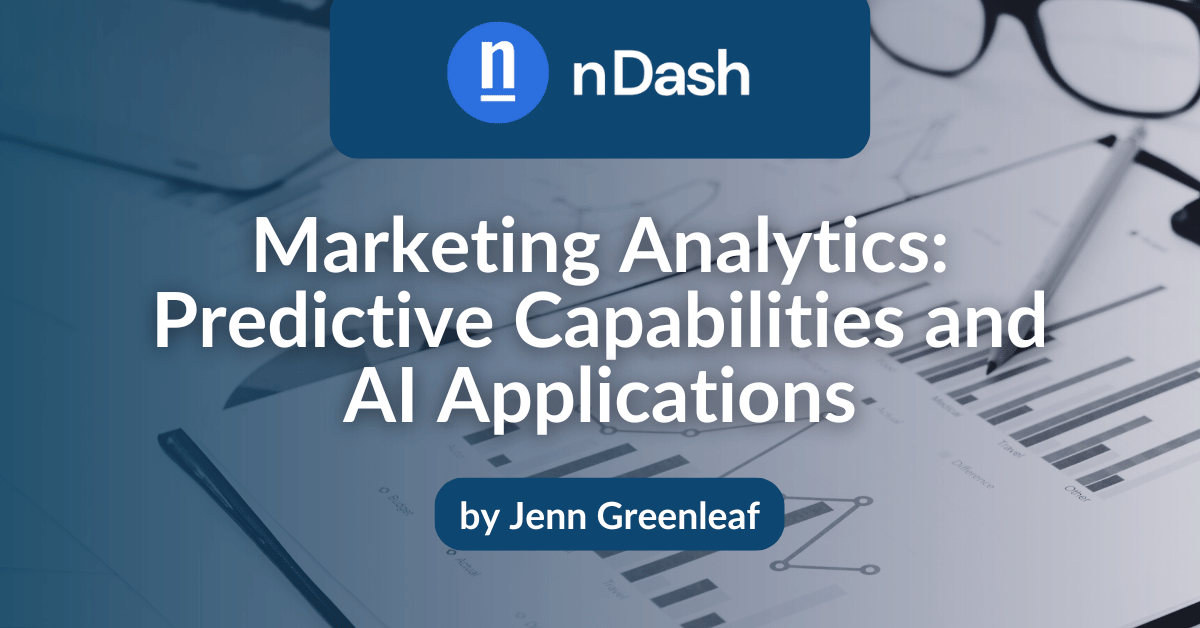Marketers today are drowning in data. Every interaction, click, and purchase generates tons of information that can be overwhelming to analyze. But what if there was a way to unlock the hidden insights buried within this data? Enter Artificial Intelligence (AI).
The AI market is booming, expected to surge from nearly $100 billion to almost $2 trillion by 2030. This explosive growth reflects AI’s increasing importance across industries, and marketing is no exception. Recognizing its potential, 61.4% of marketing professionals have already begun integrating AI into their operations.
The Data Deluge: Why Marketers Need Help
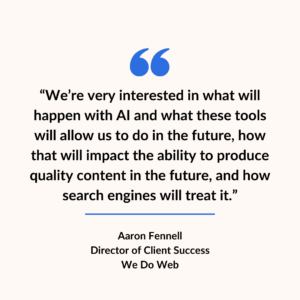 Marketers today are drowning in an overwhelming amount of data, making it nearly impossible to rely on traditional analysis methods like spreadsheets and manual reporting. They need help keeping up with the sheer volume and gleaning actionable insights to optimize campaigns.
Marketers today are drowning in an overwhelming amount of data, making it nearly impossible to rely on traditional analysis methods like spreadsheets and manual reporting. They need help keeping up with the sheer volume and gleaning actionable insights to optimize campaigns.
Imagine managing multiple campaigns across various platforms, each spitting out a firehose of information. Manually sifting through this data to identify trends and measure success? Forget it. Let’s dig a bit deeper.
Marketers today juggle data from Google Analytics, Webmaster Tools, SEO platforms like Ahrefs and SEMrush, and countless other sources. A recent study showing that around 43% of IT decision-makers fear their current infrastructure can’t handle the future of data emphasizes the need for AI. This concern underscores the importance of innovative solutions to manage, process, and analyze the exponentially growing volumes of data.
Challenges of Traditional Data Analysis
Manually analyzing all this data is incredibly time-consuming and quickly reaches the limits of human capacity.
For example, imagine a company running social media campaigns across multiple platforms. Each platform offers detailed data on engagement metrics like likes, comments, and shares. Manually analyzing this data from all sources to identify what content your audience engages with would be a very time-consuming task, making it difficult to keep up with the fast pace of social media.
But that’s not the only hurdle. Here’s what else holds traditional data analysis back:
- Limited scalability: Traditional methods struggle to handle the ever-growing volume of data effectively. As data sets get larger, manual analysis becomes increasingly impractical.
- Data integration issues: Data often resides in different formats and locations, making it difficult to combine and analyze information from various sources. This fragmented view hinders a comprehensive understanding of marketing performance.
- Inability to handle unstructured data: Traditional methods struggle to analyze unstructured data formats like social media comments, website reviews, and customer emails. These valuable insights often remain untapped.
- Difficulties with real-time analysis: Marketers need to make data-driven decisions quickly. Traditional methods can’t always keep up with the fast pace of digital marketing, hindering real-time decision-making.
The Potential of AI
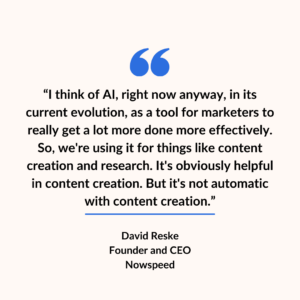 AI offers powerful capabilities, but it’s important to acknowledge that it’s more than just a one-and-done solution. While AI excels at crunching massive datasets and identifying patterns, it may require human expertise to interpret and set goals.
AI offers powerful capabilities, but it’s important to acknowledge that it’s more than just a one-and-done solution. While AI excels at crunching massive datasets and identifying patterns, it may require human expertise to interpret and set goals.
AI offers a powerful solution. Here’s how:
- Automate analysis: Free yourself from tedious data crunching and let AI handle the heavy lifting.
- Uncover hidden patterns: AI can spot subtle trends and connections that human analysis might miss.
- Generate actionable insights: Get clear, data-driven recommendations to optimize your marketing efforts.
For example, imagine an e-commerce company needing help understanding why a specific product category isn’t selling well. AI can analyze website visitor behavior data alongside product information and purchase history. By uncovering hidden patterns, the AI might discover that the product descriptions lack essential details, the target audience demographics are misaligned, or there’s a lack of relevant keywords hindering product discovery.
💡 Action items:
- Audit: Conduct an audit of your current marketing data sources and identify potential gaps.
- Strategize: Develop a data collection strategy to ensure you’re capturing all relevant data for AI analysis.
AI in Marketing Analytics: A Practical Look
Examine how AI is transforming marketing analytics through machine learning and its impact on generating data-driven insights and actionable recommendations.
How AI Works in Marketing Analytics
Machine learning algorithms are the workhorses behind AI-powered marketing analytics. These algorithms are trained on massive amounts of data to identify patterns and trends that would be difficult, if not impossible, for humans to uncover.
For example, imagine an AI tool that analyzes your website traffic data. It can automatically churn out a report highlighting the product categories that generate the most buzz, the times of day when traffic peaks, and the devices your users favor. Armed with this knowledge, you can laser-focus your content and marketing strategies.
Core Functionalities of AI-Powered Analytics Tools
AI-powered marketing analytics tools offer a range of functionalities that streamline the process of gleaning valuable insights from your data. Here are some key features:
- Data ingestion: Seamlessly upload data from various marketing analytics tools.
- Natural Language Processing (NLP): Ask questions about your data in plain English, eliminating the need for complex queries or coding expertise.
- Automated insights generation: AI sifts through your data to automatically identify trends, anomalies, and correlations, saving you time and effort.
The Expanding Power of AI in Marketing Analytics: The Rise of IoT
The Internet of Things (IoT) is a network of interconnected devices that collect and share data. It plays a vital role in AI and Big Data, and its significance in marketing analytics is undeniable.
Global spending on IoT surpassed an estimated $1 trillion in 2023, highlighting the rapid growth and potential applications for AI-powered marketing insights.
Here’s how the rise of IoT is transforming marketing analytics:
- Customer insights: IoT devices generate a wealth of data about customer behavior, preferences, and usage patterns. AI can analyze this data to identify trends, predict future needs, and create highly personalized marketing campaigns.
- Hyper-targeted advertising: AI analyzes real-time data from wearables, smart TVs, or connected appliances, allowing marketers to deliver targeted advertising with laser precision. That means no more irrelevant ads—customers see promotions for products and services they’re genuinely interested in.
- Real-time marketing optimization: IoT data allows marketers to track campaign performance in real time. AI can analyze this data and recommend adjustments on the fly, optimizing campaigns for maximum reach and engagement.
- Predictive analytics: By analyzing historical data and real-time information from IoT devices, AI can predict customer behavior and needs. Doing so allows businesses to anticipate customer demands, personalize product offerings, and even develop proactive marketing strategies. For instance, a fitness tracker might recommend new workout gear based on a user’s activity levels.
AI can analyze data from smart devices, like fitness trackers or connected appliances, to understand customer habits. Marketers can then use these insights to create targeted campaigns and personalized recommendations, boosting engagement and loyalty.
💡 Action items:
- Research tool options: Test different AI marketing analytics tools and compare their functionalities based on your specific needs.
- Conduct testing: Develop a pilot project–start small by applying AI to a specific marketing task to test its effectiveness and gain experience before full-scale implementation.
Ethical Considerations and Data Privacy
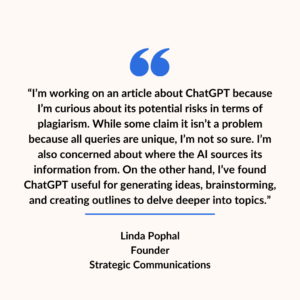 AI-powered marketing presents a fascinating opportunity: delivering hyper-personalized experiences to consumers while respecting their privacy. Striking this balance is crucial, and businesses must navigate both ethical considerations and regulatory requirements.
AI-powered marketing presents a fascinating opportunity: delivering hyper-personalized experiences to consumers while respecting their privacy. Striking this balance is crucial, and businesses must navigate both ethical considerations and regulatory requirements.
Balancing Personalization and Privacy
Consumers are open to AI-powered personalization, with 81% welcoming recommendations on products and services. But this acceptance hinges on trust and transparency. Nearly half (44%) base their openness on the company itself. This data highlights the role of a company’s reputation for ethical data practices in building trust.
Here’s how to strike the right balance:
- Transparency is key: Clearly communicate how data is used. Update privacy policies to be clear and concise and explain consumer rights regarding their data.
- Informed consent matters: Obtain explicit consent from consumers before collecting and using their data.
Navigating Regulatory Requirements
Data privacy regulations like GDPR (Europe) and CCPA (California) are increasingly shaping the marketing landscape. These regulations outline consumer rights regarding data access, correction, and deletion. Businesses must ensure compliance with relevant regulations while leveraging AI for marketing analytics.
Here are a couple of ways to achieve this:
- Compliance audits: Regularly assess data practices to ensure alignment with regulations.
- Data anonymization: Consider anonymizing data for analysis to minimize privacy risks.
Ethical AI Use in Marketing
Ethical frameworks and principles guide the use of AI in marketing. Implementing these principles builds trust and maintains a positive brand image. Here’s why ethical AI matters:
- Consumer trust: 82% of consumers express concern about AI compromising online privacy. Ethical AI practices address these concerns and foster trust.
- Responsible data collection: AI shouldn’t be used to exploit or manipulate consumers. Ethical principles ensure responsible data collection and use.
- Avoiding algorithmic bias: AI algorithms are only as good as the data they’re trained on. Biases within the data can lead to unfair or discriminatory marketing practices. Ethical AI frameworks promote diverse datasets and ongoing monitoring to mitigate bias and ensure fair treatment for all consumers.
💡 Action items:
- Audit data practices: Conduct a comprehensive audit of your current data collection, storage, and processing practices to ensure they align with ethical standards and regulatory requirements.
- Enhance transparency: Implement more transparent communication with consumers about how their data is used.
- Regular data ethics training for employees: Ensure that all employees receive routine training on the importance of data privacy.
Integration Challenges and Solutions
Integrating AI technologies into existing marketing frameworks can be exciting, but it’s challenging. Let’s explore some technical and organizational challenges and strategies for overcoming them and achieving successful AI integration.
Technical Hurdles in AI Adoption
Marketers often face technical roadblocks when integrating AI. Data siloing, where information is locked away in separate databases, hinders AI’s ability to access the comprehensive data sets it needs to function effectively.
Compatibility issues between existing marketing software and AI tools can also create integration headaches. Additionally, data standardization is crucial for AI to make accurate predictions. Inconsistent data formats across platforms can lead to skewed results and hinder campaign performance.
To navigate these complexities and accelerate AI integration, companies might consider finding a content writer with technology experience. These professionals possess the specialized skills needed to bridge gaps between marketing goals and technological capabilities.
Organizational and Cultural Challenges
Beyond technical hurdles, organizational structures, company culture, and resistance to change can impede AI adoption. Hierarchical structures may not be agile enough for the rapid iteration AI projects often require.
Fostering an AI-ready marketing team is key to addressing these cultural challenges. Transparency about AI’s benefits and its role in enhancing human capabilities, not replacing them, is crucial. Training programs can equip team members with a basic understanding of AI to quell anxieties and build confidence.
Consider this: Over 25% of a company’s market value is directly attributable to its reputation. This underscores the significant impact of ethical marketing practices on a company’s financial well-being and brand perception.
Additionally, a study revealed that 81% of respondents agree that how an organization treats personal data reflects its overall respect for customers. This research highlights the importance of ethical data practices in maintaining consumer trust.
Strategies for Effective AI Integration
Overcoming the challenges of AI integration requires a well-defined strategy that considers not just the technology but also the human element and overall business goals. Here are some key areas to focus on:
- Invest in staff training: Upskilling marketing teams with foundational AI knowledge empowers them to work effectively alongside AI tools.
- Establish cross-functional AI teams: Create teams with diverse skill sets, including data scientists, marketers, and IT professionals, to bridge the gap between technical implementation and marketing goals.
- Choose scalable and flexible tools: Opt for AI solutions designed to integrate seamlessly with existing marketing technologies. Cloud-based solutions often offer greater scalability and flexibility compared to on-premise software.
Remember, AI is powerful, but it’s the human element that will ultimately guide its effective implementation and maximize its potential benefits.
💡 Action items:
- Self-assess your marketing team’s AI readiness: Consider the challenges outlined, especially the cultural and organizational ones. Are there any changes you can spearhead to make your team more adaptable and open to using AI?
- Explore training opportunities for your marketing team: Invest in equipping your team with a foundational understanding of AI. This could involve workshops, online courses, or bringing in an expert for a session.
Can We Upload Exports & Run Prompts? Exploring the Capabilities
Marketers seeking to leverage AI analytics may consider uploading exported data, but direct API integration offers a more robust and automated solution.
Current State of AI Marketing Analytics Tools
Can you integrate with AI by simply uploading spreadsheets exported from your analytics tools? The answer is yes, in some cases. However, it’s not the ideal approach. Here’s why:
- Limited functionality: Spreadsheets have limitations on data volume and complexity compared to the original datasets within your analytics tool. Uploading them might restrict the AI’s ability to perform in-depth analysis, hindering its potential to uncover valuable insights.
- Formatting issues: Spreadsheets can become messy during the export and import process, leading to formatting errors. This can make it difficult for the AI to interpret the data accurately, potentially leading to misleading results.
- Limited automation: Uploading spreadsheets is a manual process requiring ongoing maintenance. Taking full advantage of the power of AI involves having a more automated connection that ensures a constant flow of data.
Consider this: Netflix’s use of Big Data, fueled by advanced analytics, saves them a staggering $1 billion per year through recommendation algorithms. This example illustrates the efficiency and financial gains achievable through proper AI integration with marketing data.
Better Alternatives for Marketing Analytics Tools
There are several ways to achieve a more effective connection between your marketing analytics tools and AI:
- Direct API integration: Many analytics tools offer APIs that allow AI tools to connect directly and access the full dataset. That’s the most efficient and reliable method, providing the AI with complete and unfiltered data for analysis.
- Cloud-based solutions: Some AI marketing tools operate entirely in the cloud. You can connect your analytics tool to the cloud platform, allowing the AI to access the data directly within the cloud environment. This eliminates the need for manual uploads and downloads.
- Pre-built connectors: Several AI marketing tools offer pre-built connectors for popular analytics platforms. These connectors streamline the integration process by ensuring a smooth and automatic flow of data between the two platforms.
Here’s How AI Can Benefit You, Even With Limitations
Uploading data, even in limited amounts, can still lead to valuable discoveries through AI marketing analytics. However, to truly unlock its full potential, let’s explore the advantages of a more sophisticated connection.
Scenario 1: Uploading Data Leads to Unexpected Discovery
Imagine a company uploading website traffic data and asking the AI, “Why did our bounce rate spike last week?” Despite the limitations of the uploaded data, AI analyzes it and discovers a correlation between the spike and a recent website design change. This prompts the marketer to investigate the design change further and potentially revert it, potentially saving conversions.
Scenario 2: AI Identifies Hidden Patterns in Uploads
A clothing retailer uploads customer purchase data. The AI, even with limited data from the upload, identifies a previously unknown segment of customers who prefer sustainable clothing options. This allows the retailer to tailor marketing campaigns and product offerings to this specific segment, increasing sales and customer satisfaction.
💡 Action item: Explore the API integration options offered by your current marketing analytics tools. This research will unlock AI’s full potential and allow you to gain deeper insights from your marketing data.
Beyond Uploads & Prompts: Advanced AI Applications
Move beyond basic data input–advanced AI applications unlock powerful capabilities like predictive analytics and real-time campaign optimization.
Predictive Analytics
Imagine having a crystal ball that reveals future trends and customer behavior. AI-powered predictive analytics makes this a reality. By analyzing vast amounts of customer data, AI marketing tools can predict which customers are at high risk of churning (canceling their subscriptions).
That allows you to proactively reach out with targeted offers or incentives, fostering customer loyalty and minimizing churn. For example, around two-thirds of travel brands are actively investing in predictive analytics. This data highlights the growing recognition across industries of its value for strategic marketing decisions.
Customer Segmentation
AI marketing tools can analyze a wealth of data sources, including social media and purchase history, to uncover distinct customer segments. These segments might be based on demographics, interests, or purchasing behavior. Armed with this knowledge, you can develop targeted marketing campaigns and personalized content for each segment, leading to higher engagement and sales.
Real-Time Campaign Optimization
With AI, you can continuously optimize your campaigns for peak performance. Imagine using AI to conduct A/B testing on product page layouts in real-time. AI can automatically adjust the layout for different visitors based on their browsing behavior, optimizing the page for conversions. This step ensures you’re always presenting the most effective version of your campaign to each individual.
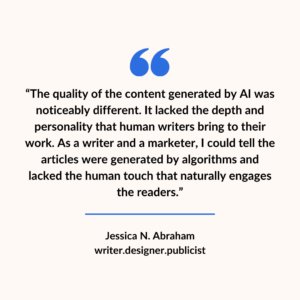 Content Creation & Personalization
Content Creation & Personalization
Personalization is key to customer engagement. AI marketing tools can generate rough drafts of content tailored to specific user segments. For instance, an e-commerce store can integrate its AI tool with its product database.
The tool can then analyze a customer’s past purchases and browsing behavior and, in real-time, personalized product recommendations on the website. This strategy ensures customers see items they’re most likely to be interested in. The numbers back it up: over 44% of companies leveraging AI in marketing have used it for various stages of content creation.
To supercharge your content creation process, especially for niche markets, find a B2B writer with expertise in leveraging AI tools. These writers can craft highly targeted content that resonates with your audience.
💡 Action items:
- Research: Identify specific marketing goals where AI applications like predictive analytics or real-time optimization could have the greatest impact.
- Experiment with different AI functionalities: Explore the various features offered by AI tools to discover what best suits your needs.
The Human-AI Partnership: The Future of Marketing Analytics
AI empowers marketers to gain deeper customer insights, but human expertise is still crucial for successful marketing analytics workflows.
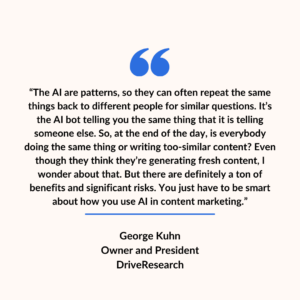 AI is Not a Replacement
AI is Not a Replacement
Using AI is an opportunity for marketers, but it’s not here to take their jobs. Instead, it serves as a powerful collaborator, helping to automate tasks, identify patterns, and generate insights that would be impossible with human analysis alone.
This is particularly true in content marketing, where 70% of businesses report achieving extreme success. However, simply measuring results isn’t enough. Understanding why content resonates with audiences requires human interpretation of AI-generated data.
This highlights the importance of human expertise in deciphering AI insights and making strategic decisions based on them. To unlock the power of AI-driven insights, find a business writer who can translate data into impactful stories.
Importance of Human Expertise
AI excels at identifying hidden patterns and trends within massive datasets. But it’s human intuition and creativity that transform these insights into actionable strategies. Here’s where human expertise is truly invaluable:
- Interpreting AI insights: AI can unearth hidden patterns and correlations in vast datasets. But it’s humans who translate these findings into actionable insights that drive marketing strategies.
- Making strategic decisions: Ultimately, human marketers must leverage AI insights and craft winning marketing campaigns. This requires a deep understanding of the target audience, brand messaging, and overall marketing goals.
Building a Successful AI-Powered Marketing Analytics Workflow
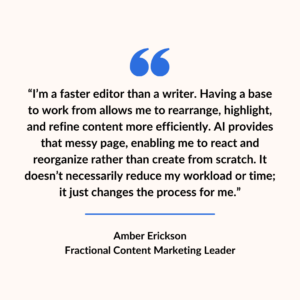 When examining how marketers allocate their budgets, 19.2% of respondents reported dedicating more than 40% of their marketing budget to AI-driven campaigns. This data point highlights the significant investment and faith in AI’s power to transform marketing outcomes.
When examining how marketers allocate their budgets, 19.2% of respondents reported dedicating more than 40% of their marketing budget to AI-driven campaigns. This data point highlights the significant investment and faith in AI’s power to transform marketing outcomes.
AI offers a powerful tool to extract deeper insights, personalize campaigns, and optimize marketing efforts. Let’s say an AI tool analyzes social media data and identifies a trending topic that aligns with the brand’s message. The marketer, armed with this insight, uses their creativity to develop a social media campaign that capitalizes on the trend while staying true to the brand’s voice.
Imagine a marketing team launching a new product and wanting to increase website conversions. To guide the AI, the team defines this goal and feeds it relevant data sets and customer information. This human direction ensures the AI focuses on this specific marketing objective, not something else entirely.
Here’s a roadmap to building a successful AI-powered marketing analytics workflow:
- Define clear goals and objectives: Marketing teams need to define specific goals for analysis. Is it to increase website conversions for a product launch? Boost customer engagement on social media? Clarity on these objectives helps guide the AI and ensures it focuses on the right marketing priorities.
- Ensure data quality: AI is only as good as the data it’s trained on. Marketers need to ensure data quality and consistency to avoid inaccurate or misleading insights.
- Continuously monitor and refine AI models: AI models are not static. Regular monitoring and adjustments are necessary to optimize performance and ensure they continue to deliver valuable insights that align with evolving marketing goals.
Marketing professionals are looking ahead to a future where AI can improve their efforts. Over half (54.5%) believe AI will significantly enhance their ability to reach and engage customers.
💡 Action items:
- Plan: Develop a plan for integrating AI tools into your existing marketing analytics workflow while maximizing human expertise for strategy and decision-making.
- Budget: Invest in training your marketing team on how to best leverage AI tools and interpret their insights.
Marketing Analytics: A Collaboration Between Humans and AI
We’ve seen how AI can automate tedious tasks, unearth hidden patterns in data, and generate insights that would be impossible for humans alone. For example, marketers can gain a deeper understanding of their customers, optimize campaigns in real time, and personalize content for maximum engagement.
However, it’s important to remember that AI is not a replacement for human expertise. Marketers still play a crucial role in interpreting AI insights, making strategic decisions, and ensuring ethical data practices. The future of marketing analytics lies in a powerful partnership between humans and AI, where each leverages its strengths to deliver exceptional marketing results.
